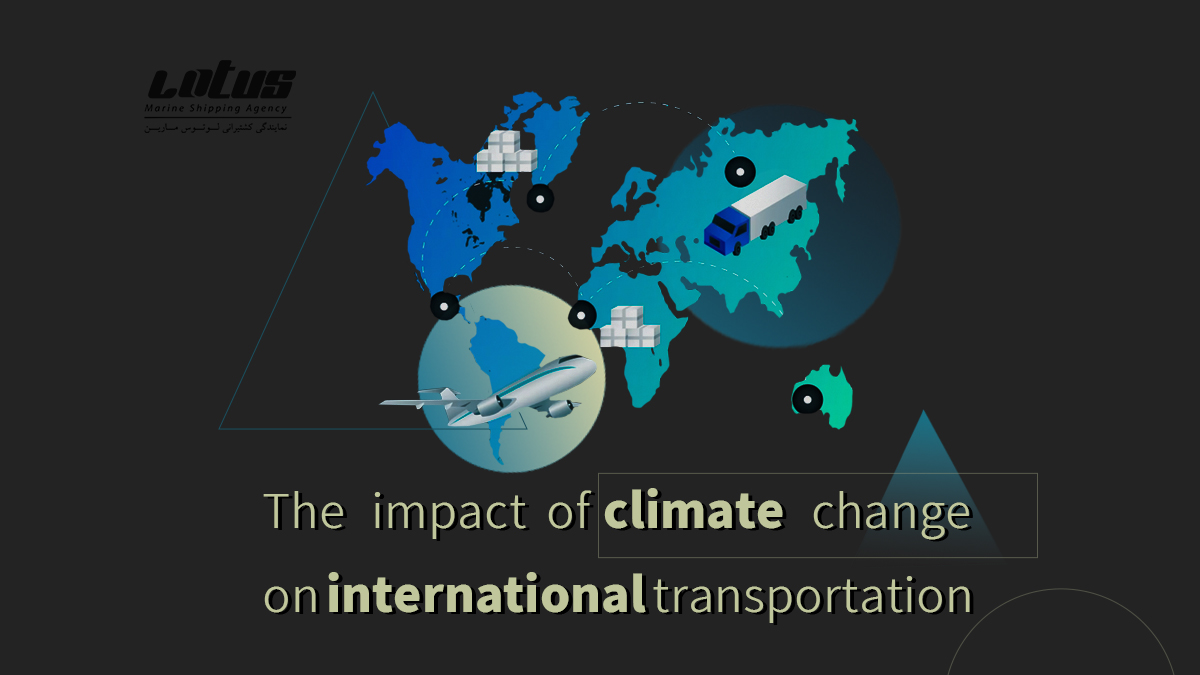Climate change is a global phenomenon that is significantly impacting various aspects of our lives, including international transportation. As the Earth’s climate continues to change, the transportation industry faces new challenges and opportunities in mitigating its environmental footprint. This article explores the impact of climate change on international transportation and discusses the measures being taken to address these challenges.
- Rising Sea Levels and Coastal Infrastructure:
- Climate change-induced rising sea levels pose a threat to coastal infrastructure, including ports and harbors, which are vital for international shipping.
- Coastal infrastructure resilience and adaptation measures are being implemented to minimize disruptions and ensure uninterrupted international trade flows.
- Extreme Weather Events and Disruptions:
- Increasing frequency and intensity of extreme weather events, such as hurricanes and storms, can disrupt international transportation networks, causing delays and damage to infrastructure.
- Improved weather forecasting systems and emergency response plans are being implemented to minimize disruptions and ensure the safety of goods and personnel.
- Shifts in Trade Routes:
- Melting polar ice caps due to climate change are opening up new shipping routes, such as the Northern Sea Route and the Northwest Passage.
- These alternative routes offer shorter transit times, reduced fuel consumption, and lower greenhouse gas emissions compared to traditional routes, but they also present unique challenges due to ice navigation and limited infrastructure.
- Adoption of Sustainable Fuels and Technologies:
- International transportation is gradually transitioning towards sustainable fuels and technologies to reduce greenhouse gas emissions.
- Biofuels, electric vehicles, and alternative propulsion systems are being explored and adopted in the aviation, maritime, and land transportation sectors.
- Carbon Offsetting and Emission Reduction Initiatives:
- To mitigate the carbon footprint of international transportation, carbon offsetting programs are being implemented.
- Emission reduction initiatives, such as energy-efficient vessel designs, eco-friendly airports, and improved logistics planning, are being pursued to minimize environmental impact.
- Collaboration and International Agreements:
- Governments, organizations, and industry stakeholders are collaborating to address climate change in international transportation.
- International agreements, such as the International Maritime Organization’s (IMO) Sulphur Cap regulation and the Paris Agreement, aim to reduce greenhouse gas emissions and promote sustainable practices.
Climate change is transforming the landscape of international transportation. The industry is adapting to rising sea levels, extreme weather events, and shifting trade routes while embracing sustainable fuels and technologies. Collaboration and international agreements play a crucial role in mitigating the impact of climate change on international transportation. By embracing innovative solutions and sustainable practices, the industry can navigate the challenges posed by climate change and contribute to a greener and more resilient future.

